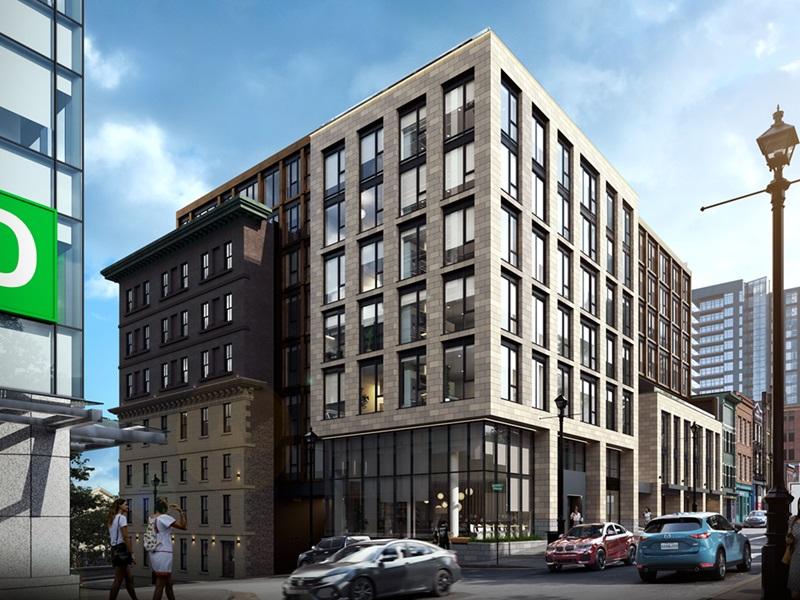
GUEST SUBMISSION: While new construction starts in Toronto and Vancouver have significantly slowed, you may be hearing that construction in Halifax is humming along.
The city’s unique geography and strong multifamily rental market insulated Halifax from Canada’s decade-long condo market boom, that is now in recession in Toronto and Vancouver. But in this moment of time, like the rest of the country, Halifax is still adapting to its own new set of market challenges.
To understand those challenges and how the industry is adapting, one first needs to understand Halifax’s unique real estate ecosystem. To start, Halifax has always been a city of predominantly purpose-built rentals.
In contrast, new condo builds have been sporadic, concentrated in a few premium zones.
Another key difference is our city’s overall approach to development. Most of the development and construction companies in Halifax are local families who have been building in this city for decades.
These family-run companies are owners and operators with construction boots on the ground. Everything is vertically integrated. They hold on to their assets long-term and feel a responsibility to contribute directly to the local economy.
Halifax a long-time leader in purpose-built rentals
This has served Halifax well, producing high-quality apartment buildings such as 2023 Urban Design award-winning George Residence on Pepperell and the soon-to-be-completed Press Block, both developed by a local design-build development company with deep roots in the city.
Like most of our local builders, their intentions are to hold, not flip their assets. So, they get delivered with a high attention to detail, context and livability.
Finally, Halifax’s core and suburban areas are a short drive from each other. Which means within five to 10 minutes apart, you have a diversity of high-quality rental housing options and price points.
In centre ice, in those very high-value locations, apartment buildings will likely have more intricate amenity designs and architecture that stands out.
Ten minutes out, the suburban apartments offer larger unit sizes and amenities for the same price compared to downtown buildings. These buildings are also well-built and managed and include extensive amenity spaces like movie theatres, gyms and yoga studios.
Population stabilization and zoning reforms
International and domestic immigration and an aging boomer population have been major drivers for Halifax's purpose-built rental development over recent years, but now Halifax is seeing a stabilization of this growth. This is raising concerns about the demand for new housing developments, especially given the surge in construction projects initiated during the population boom when our vacancy rate for rental apartments was one per cent.
Another significant change has been municipal zoning reforms that have made more land “ready to build.”
We are seeing similar policy shifts throughout the country to help accelerate housing development. While this is good for getting more supply into the market faster, this also has dramatic impact for our existing real estate ecosystem in Halifax, since our zoning laws have been pretty much intact since the 1970s.
But with this reform, many areas have now shifted to "as-of-right" development, resulting in an influx of sites now under redevelopment. This surge increases competition for the market at a time when demand for multifamily has slowed and puts higher demands on trades, in a city that already has a labour shortage and no other major urban centre close by to draw on.
How the local industry is adapting
All these changes are forcing even the most experienced developers to recalibrate some of their strategies to maintain their competitive edge. Here are some notable ways the local industry is adapting:
1. Location, location, location is still top consideration. Taking a localized approach for each building and knowing your tenant profile before shovels are in the ground was always important, but is now even more essential.
2. Strategic marketing and leasing incentives: For higher-end products, leasing may not be happening as fast as it used to. So how property owners are positioning their building and marketing it before project completion is becoming increasingly important. Some owners are offering incentives that we have not previously seen in our market, like one month of free rent or parking.
3. Making your building stand apart: We are seeing a bigger push toward more extensive lifestyle amenities, especially in the heart of the city. This is something we know our younger demographics are demanding. Designs are now including yoga rooms, rooftop decks with firepits, dining rooms with upscale finishes.
4. Ensuring you have a strong business case to support your vision. Having a well-thought-out pro forma for your project and exploring the different levels of financial vehicles available, including CMHC-insured loans, is important to ensure your project aligns with the various financing incentives and programs available.
Halifax has been, and I believe we will always be, a leader in purpose-built rentals for the country.
Despite new market challenges, one thing is clear: Real estate creativity in Halifax is brewing and having an in-depth understanding of local communities and context, policy changes, and a sharp eye on risk, will still be keys for staying ahead.










